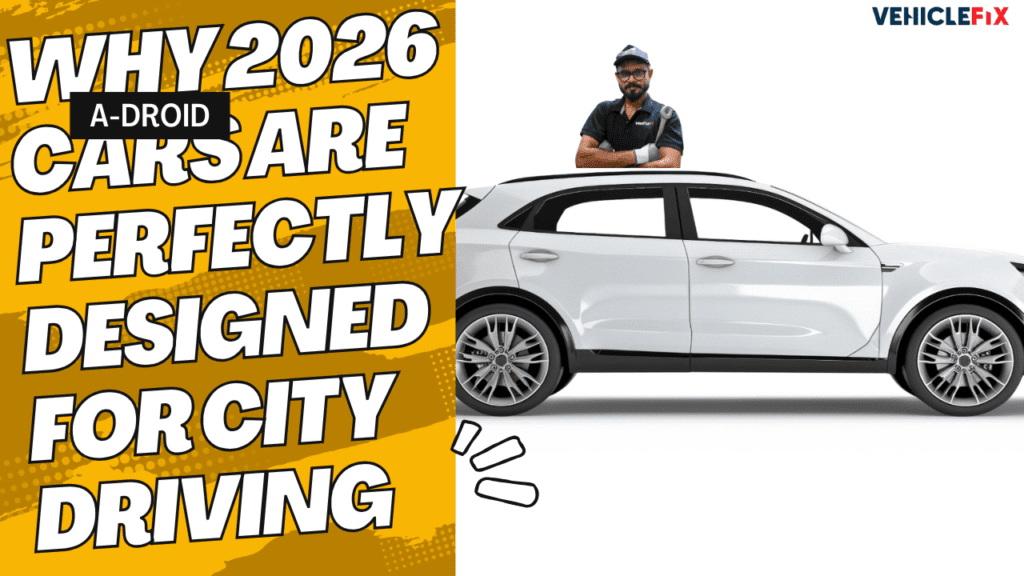
2026 Cars, Traffic jams, parking shortages, and environmental issues have traditionally been the biggest obstacles to urban travel. With smarter, cleaner, and more effective urban mobility solutions, the 2026-launched car models seek to completely transform how we travel across cities. Let’s examine how these vehicles are changing the rules for people who live in cities.
1. Compact and Space-Efficient Designs
Compact cars are becoming more and more popular as cities get denser. With slimmer exteriors that make parking and traversing tight streets easier, 2026 automobiles are built with space efficiency in mind. In order to meet the demands of urban commuters, automakers are now producing folding car designs and micro-cars.
2. Electric Vehicles (EVs) Dominate the Scene 2026 Cars
In 2026, electric cars will be the main attraction since they offer a sustainable substitute for conventional fuel-powered automobiles. Longer ranges made possible by improved battery technology allow city commuters to travel every day without needing to be charged frequently. EVs are turning into a sensible and environmentally responsible option for city living as more charging stations are incorporated into cityscapes.
3. Shared Mobility and Subscription Models 2026 Cars
In cities, owning a car can be costly and cumbersome. Subscription-based ownership and shared mobility alternatives are expected to grow in the 2026 auto market. These models allow commuters to access cars whenever they need them, without having to worry about parking, insurance, or upkeep. In addition to cutting expenses, this change eases traffic by reducing the number of cars on the road.
4. Smart Connectivity and Integration 2026 Cars
More connections are being made than ever before in urban commuting. Advanced entertainment systems that are connected with real-time traffic data, public transportation schedules, and parking availability apps are standard on cars in 2026. AI-powered systems and voice-activated assistants provide a smooth, hands-free driving experience, reducing stress and increasing productivity during trips.
5. Advanced Safety Features for City Driving 2026 Cars
Although navigating crowded city streets can be unexpected, 2026 cars come with state-of-the-art safety measures to safeguard both pedestrians and drivers. Automatic emergency braking, pedestrian recognition, blind-spot monitoring, and adaptive cruise control designed for stop-and-go traffic are examples of advanced driver-assistance systems (ADAS).
6. The Rise of Autonomous Vehicles 2026 Cars
Even while complete autonomy may still be a ways off, 2026 cars with semi-autonomous functions are improving the efficiency and safety of metropolitan trips. When it counts most, automated lane-keeping, traffic jam assistance, and self-parking technologies let drivers unwind and concentrate on the road. These developments are opening the door to a more seamless urban travel.
7. Eco-Friendly Materials and Designs 2026 Cars
In its 2026 models, automakers are incorporating energy-efficient designs and sustainable materials in response to growing environmental concerns. These vehicles demonstrate a dedication to lessening their environmental impact with features like solar-powered auxiliary systems and recycled interiors.
8. Customizable Features for Urban Lifestyles
With variable interior combinations, 2026 cars are being developed with urban lifestyles in mind. Commuters can customize their cars to meet a variety of demands, such as grocery shopping, hauling equipment, or commuting with friends, thanks to foldable seats, more storage capacity, and modular designs.
Conclusion
By tackling the fundamental issues of city living, the 2026 automobile models are revolutionizing urban commuting. These cars offer a future where city commuting is simpler, greener, and more pleasurable because to their unique designs, smart connections, and sustainable technologies. Getting from point A to point B is only one aspect of the future for urban commuters; another is doing so more efficiently and with less of an impact on the environment.
